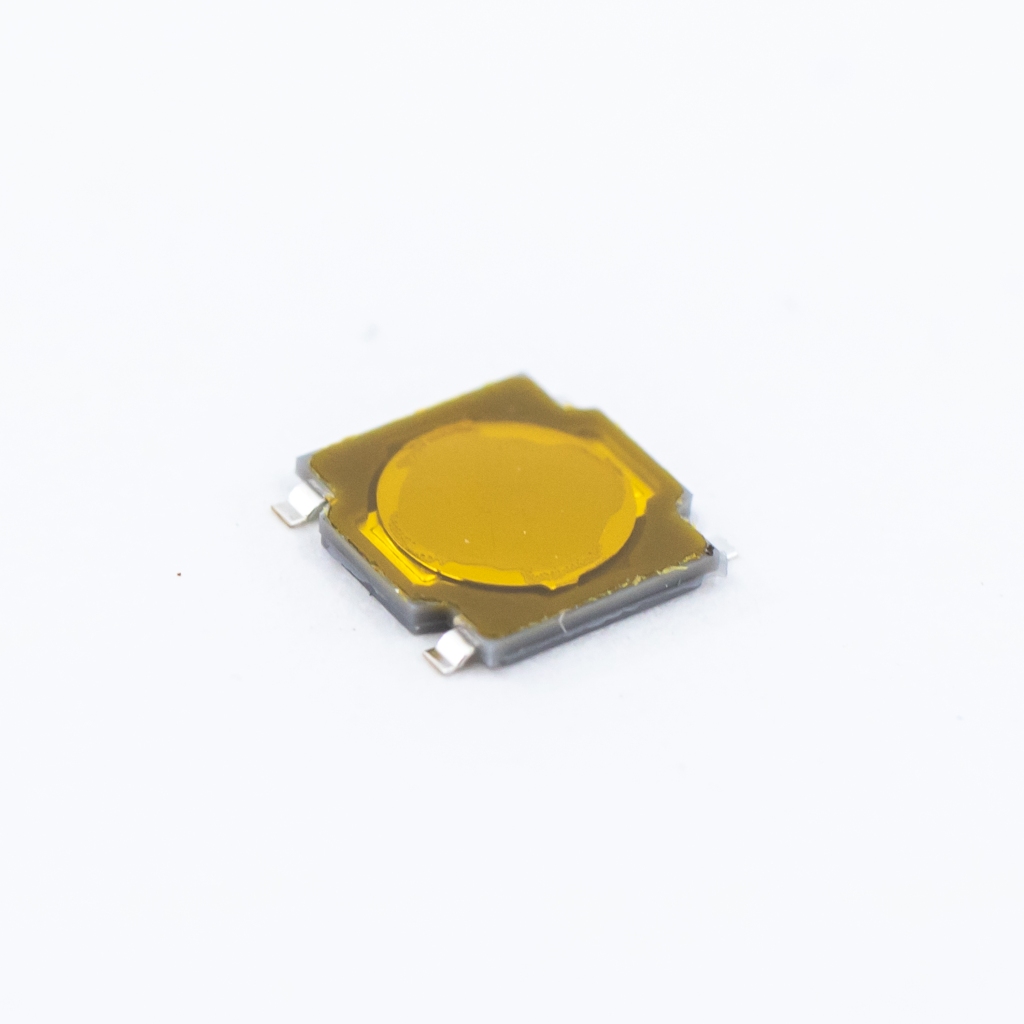This is part of a series of stories investigating the use and potential use of switches in sports.
Serena Williams is playing her final tennis tournament at the 2022 U.S. Open next week. Over the course of her 28-year professional career, tennis technology has evolved more than racket construction did for more than 100 years dating back to the 1860s. Tactile switches have been instrumental in driving that technological advancement.
Tennis Swing Sensor Switches
For the past few months, I’ve been using the Zepp tennis sensor and smartphone application to monitor my practices. I was first introduced to the product by a player at a tennis tournament in Miami last year. I noticed the device attached to the bottom of her racket handle and couldn’t help but ask about it. She was kind enough to show me the data the sensor collects, which has allowed me to diagnose and improve issues in my game more easily. The sensor estimates ball speed, contact location, and spin rate. It also knows what shot and spin is played, whether it’s a topspin lob, a forehand drive, or backhanded slice.
Professional tennis players don’t have much use for wearables technology like racket sensors. They are far too precise for the data to do them much good. But for amateurs like me, knowing that I’m only hitting the sweet spot on my groundstrokes 60 percent of the time tells me I need to take more steps to improve my position when playing those shots. Most mistakes on the tennis court are a result of laziness or fatigue. The more steps you’re willing to take, the better shots you tend to make. The Zepp tennis sensor has been helpful in directing my focus to the things I need to improve and offered some direction in how to improve them.
The Zepp tennis sensor and devices like it typically feature one tactile switch to turn the device on and off and to pair it with another Bluetooth device, whether that be a smartphone or smartwatch. Given the small size of the devices, the E-Switch offering most suitable for these applications is the TL3342 Series low profile tact switch.
The TL3342 Series has a 1.54 mm profile and positive tactile response, so you know when the switch is engaged or not. E-Switch offers this switch with multiple operating force options, both of which come with a long-life expectancy of 100,000 cycles. This tiny, surface mountable switch is perfect for applications involving small sensors and lacking available space.
Smartphone and Smartwatch Switches
Of course, sensors monitoring your tennis strokes are useless without a means to view the data. That’s when tact switches like the TL3315 Series come into play. The TL3315’s ultra-low profile and surface mount design is meant for slim applications like smartphones and smartwatches that allow you to monitor your tennis practice or match. You can review data as you play without missing a beat if you have the app associated with your sensor device downloaded to your smartwatch. You can even keep score on your watch. The version of the TL3315 Series switch requiring the least operating force to actuate (100gf) has an electrical life expectancy of a million cycles, allowing your smart devices a long life even after you’ve replaced them with newer, better technology. Speaking of better technology…
Hawk-Eye Camera Switches
Due to the advancement in racket technology and the increased athleticism of today’s tennis players, the human eye is often not capable of determining whether a ball is in or out, as indicated by this frame-by-frame breakdown. That’s why professional tennis players have much better technology upon which to rely.
Hawk-Eye is to sports technology what Serena Williams has been to women’s tennis: the greatest of all time. No other sport features a more sophisticated, accurate, or informative means of officiating and broadcasting the game. While other sports use cameras to tell you what happened, Hawk-Eye uses cameras to calculate what’s going to happen. And if it didn’t, we’d often get it wrong.
Not only does Hawk-Eye make line judges unnecessary, it also monitors the movements of the players to such a degree that the rate at which they change direction can be quantified. IBM collects the positional data from the Hawk-Eye player tracking system to provide players and coaches with a new metric called “redirect steps” or “red steps.” The information can be used to improve tactics and training, but it’s expected to grow to include workout data from wearables like force plate orthotics the USTA offers players. This sneaker insole sensor combined with the Hawk-Eye player tracking data not only measures the rate at which players redirect their momentum, but the force required to do so. This can help players adjust their “red steps” to be more efficient and even avoid injury.
Hawk-Eye cameras feature tactile switches like the ones the NBA and WNBA use in their arenas to track players’ movements in three dimensions. The TL1105 Series tactile switch has found itself inside a digital camera because it has reliable dome contact technology and strong tactile feedback. This through-hole tact switch also has a life expectancy of 100,000 cycles, a right-angle mounting option, and an earth-ground version. Many actuator lengths and multiple operating force options are also available.
As you watch Serena in the U.S. Open for the last time, think of all the switches that have come along over the course of her career and helped grow the game of tennis just like she has.





